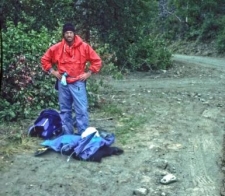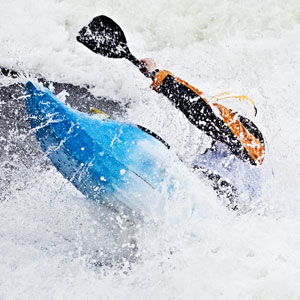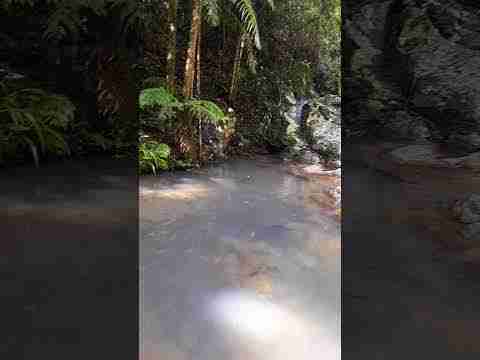[please login to make this ad block disappear]
Doug Ammons On Jeff West's Death, and on Ben Marr's First D of Site Z
 In His Own Words: Doug Ammons On Jeff West's Death on the Stikine, Plus: His Take on Ben Marr's First D of Site Z
In His Own Words: Doug Ammons On Jeff West's Death on the Stikine, Plus: His Take on Ben Marr's First D of Site Z
My boat was trapped in an undercut wall and after trying everything I could, I finally pulled the plug. I recirculated multiple times into the undercut, but washed out, swam into the center. With Jeff's help I made it to an eddy right above Wasson's holAfter long challenging and making mincemeat of the world's best, from John Wasson on its first descent in 1981 (and the christening of the name "Wasson's Hole") to Bob McDougall's near-death in 1989, leading to his essay, "Drowning," in Patagonia's catalog - the Stikine River claimed its first life this year, that of Jeff West, 42, owner of Chattanooga's Ace Kayaking School, on Tuesday, Sept. 11.
Just before making attempting his one-day solo descent, West kayaked the stretch with Stikine pioneer Doug Ammons, who was heli-evaced out of the run after a nasty swim. PL caught up with Ammons -- the first person to run it solo, in a three-day descent in 1992 - for his take on his run with West', Ben Marr's subsequent first descent of notorious Site Zed, and one of the biggest badges of courage in whitewater... On West: "The Stikine condenses the sport's full range of experiences and challenges into a single day. It's a gut-wrenching, threatening place -- you have to have the mindset that you want to be in there alone. It's is every bit the equivalent of soloing a major Himalayan peak." "Jeff was the most powerful and skilled kayaker I've ever had to honor to paddle with. He was more than capable of the solo in a day. He'd already run the Stikine twice. "We were going fast down the first quarter or so of the run, paddling well, running on our knowledge of the rapids and boat scouting, getting out in only two places to briefly scout, easily on a pace to make it down in under seven hours. " I changed my line on impulse as I came into the crux move at the bottom of Pass-Fail, and got shoved into a horrendous situation. My boat was trapped in an undercut wall and after trying everything I could, I finally pulled the plug. I recirculated multiple times into the undercut, but fortunately washed out, swam into the center of the river and with Jeff's help made it to an eddy right above Wasson's hole. "As soon as I told him I was fine, Jeff charged around the corner into Wasson's after my boat, which he found several drops further down. I was cliffed out, but he hit his "spot" which led to a chopper coming in hours later to net me and retrieve my boat. I decided not to continue. Jeff made sure I was okay, then he went on and did the rest of the run that day, making it to the take out at the Tahltan confluence at dusk, even with the four hour delay. "He did 70 percent of the run solo, and finished in a day. He totally understood the challenge and was fully ready when he came back two days later; he'd already essentially done a solo in a day. "I'm still really upset by his death. He was one of the greatest guys ever. Sure he was a great paddler, but he was ten times as great a person and friend. We'll never know what happened, all we can do is guess. On Marrs "Site Zed is a huge rapid, but we all agreed it was runnable. If it had been by a roadside, it would have been run a long time before this. The problem is that it is a huge complex rapid in a virtually inaccessible canyon, so the decision process that takes place by a roadside does not apply when you're in there self-contained. "It's just another level beyond what you want to take on. Probably 70 percent of it had been run before, and you could see each piece of it, but putting it together while running in a loaded boat, knowing you cannot get back upstream, having very limited safety options - just somebody down another 300 yards below the last set of huge holes, waiting to pick up any pieces that come through -- all of that put together made people draw the line. Even so, a typical line would be to portage half way down, and then run the final two big drops. The trick is to piece it all together from the top, which is a huge achievement. "When you know what's downstream it makes you more cautious about each decision. Knowing that you are only about one third of the way through the canyon at Site Zed, that there is so much difficult whitewater remaining, tends to push you on your heels and make you more hesitant to hang it out on any given rapid - especially with something so difficult as Zed. "Your attitude changes the more you know about how much the canyon changes, and how much the rapids vary across levels. The river is still actively cutting that canyon, so rapids appear where they weren't, and the existing rapids change dramatically over time and levels. It creates an almost infinite canvas for us to work with. "The sport progresses in many ways, and opening up Zed allows another level of run in the canyon. The next step is to do it all as part of a smaller team, without the extra support that a team of seven or eight gives you, and then perhaps doing the entire canyon from the top, solo. A no-portage descent is possible, but depends on water levels. "People typically portage most of Zed, and "The Hole That Ate Chicago" because it is really nasty and the portage is short. The river is complex and changing. When I soloed it in 1992, I portaged twice - the top 2/3rds of Zed and then V-drive, which at the time had a huge boulder right in the middle of what is now a clean line. That boulder moved somewhere around 2001 or so. In 1992, I looked carefully at both Zed and V-drive and saw lines that I thought were possible, but the complete lack of support- not even having somebody to bounce ideas off of, or somebody simply be there to share the stress - changes the way you make decisions. "Ben is not only a great paddler, but his group - a superlative team of world class paddlers - optimized the support, kept things lighter and super positive, allowed detailed analysis of lines and encouragement - all of which supports a great run like Ben had. "But the river always has more up its sleeve - over the 30 years people have been in there, multiple rapids have changed in dramatic ways which will undoubtedly continue, so some may get harder, others may become cleaner, still others will appear out of nowhere. The canyon a very dynamic place, an unfinished piece of Nature's work. I flew over the canyon when it was about 25,000 cfs - and it is so ragged and huge and so fast, with big exploding whirlpools in the lead ins, massive holes, and river-wide chaotic breaking waves. Doing it at a higher flow like that is another level of the sport. Basically, it's a different river and it does not care if Ben or anybody else ran the rapids at half that flow, so new limits appear even as old limits are surpassed. "It's a great achievement to run the last unrun rapid in the Stikine, and we can thank Ben and his team for showing how it can be done. But our challenges continue beyond that. When you fly the canyon at 25,000 cfs, you see another level of paddling far beyond what we're doing now. No matter what we do, the river always has more, which is why we keep coming back to be inspired by it." |
Login to post here














 Get for free:
Get for free:








